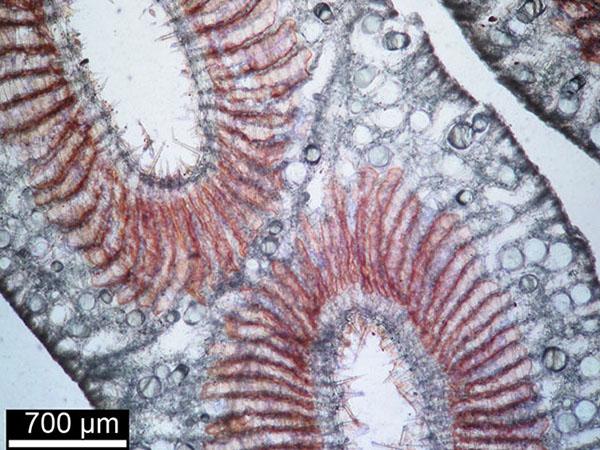| Sponge with units of up two to four fused syconoid tubes, each with a terminal osculum, which are connected at their base. |
| brown |
| Each syconid tubular module with terminal osculum without a crown of trichoxeas. |
| smooth |
| The atrial skeleton is composed of tetractines, whith their basal rays lying tangential the atrial wall and the apical ray reaching into the atrial cavity. The syconoid radial tubes are supported by numerous rows of sagittal triactines, which form an atriculated choanoskeleton. |
| The cortical skeleton is mainly supported by approximately 4 rows of tangential giant diactines, all arranged parallel to each other. In between, triactines of the radial tubes occur, but in this parts no choanosome is present, but only inhalant canals. A dense layer of perpendicular microdiactines (mortar spicules) are the reason for the sponges smooth outer surface. |
| Giant cortical diactines, choanosomal and subatrial sagittal triactines, atrial tetractines |
| Cortical microdiactines (mortar spicules). |



